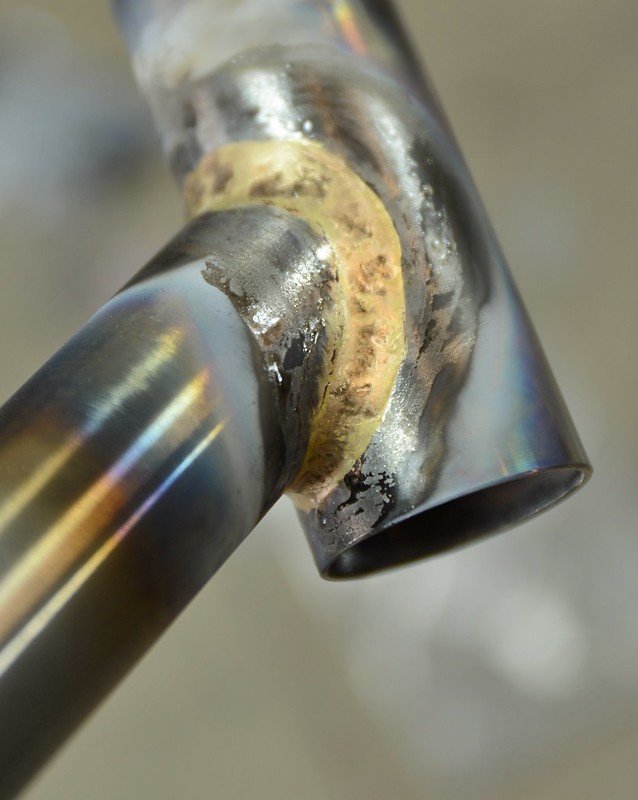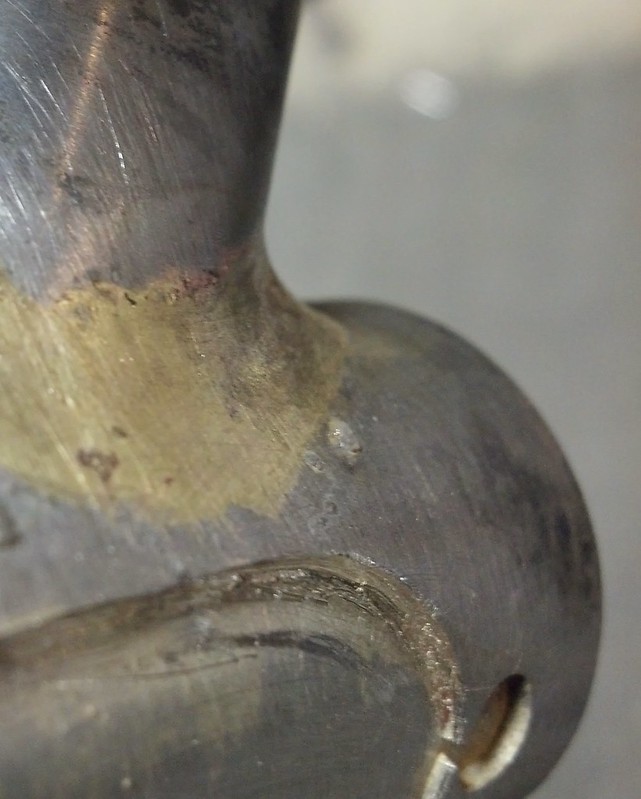???
Keith Bontragers article is about heat and its effects.1) Preheat the entire joint. Take your time and don’t be in a hurry to lay down the fillet. By heating the entire joint you minimize the amount of distortion of the tubes. This is very important on head tubes and BB’s where ovalizing can cause real issues in machining. I heat the bottom of the BB and the front of the head tube just as much as the part I’m laying the fillet on. This will make your life much easier down the road.
2) “Tin” the joint. This is in effect tacking the entire joint. This is the real structure of the fillet and will make sure that the bike is still together after your death. Tin it well and flow brass into the joint evenly all round.
3) Once the joint is tinned I start laying the fillets. Turn the torch way, way down. I use a flame that is about the same size as I use doing bottle bosses. Small. When laying the fillet ALWAYS work away from the torch. I’m right handed and hold the torch in my right hand……….so I work from right to left. This will assure that you are preheating the spot you want to lay down the next bead of fillet and also make sure you aren’t melting the stuff you just put down. This is super important to me. Lay the fillet in beads like a TIG welder does. Overlapping beads. If the fillet starts to get away from you and is getting sloppy back off and let it cool some. Do not rush. Back off and take a few long breaths before going back in. It will still be there. The few seconds of time this cost you here will save you hours later in finish work. Go slow.
4) Do everything you can to NOT go back over the work to reheat and smooth things out. This can get away from you in a hurry and you’ll end up with the fillet on your foot.
5) I have the frame in a Park stand so I can rotate it and get the angle I want for each bead. Take the time to get the frame is a good position. Do not try to work around a corner. Take you time and move the frame so you can get at it properly. See the trend?……..take your time.
Read it, try to understand and practice.


 Likes:
Likes: 



 Reply With Quote
Reply With Quote
 . For example I can hardly get what Garro means by "Don't "rob" your puddles". And I often scratch my head when reading Monsieur Sachs. But this is my only complain, and after it is a good way for me to raise the bar for my english skills.
. For example I can hardly get what Garro means by "Don't "rob" your puddles". And I often scratch my head when reading Monsieur Sachs. But this is my only complain, and after it is a good way for me to raise the bar for my english skills.

Bookmarks